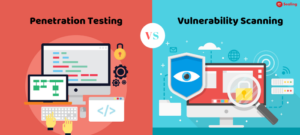Application Vulnerability Scanners
What is Vulnerability Scanners
Application vulnerability scanners are tools used to find and fix security holes in web applications. They can find a variety of vulnerabilities, including those posed by scripts and forms. Many of these tools are easy to use and are suited for beginners and experienced penetration testers alike. A good vulnerability scanner can also act as a proxy to intercept incoming traffic.
The best application vulnerability scanners can help companies identify potential security holes in their applications. They are often used by DevOps teams to test applications before they are deployed to production. These tests simulate the techniques an attacker would use to compromise an application. Application vulnerability scanners can also identify issues involving runtime vulnerabilities, such as authentication errors and server configuration errors. They can also detect cross-site scripting and SQL injection errors. These tools can even run in preproduction.
Despite the advantages of using vulnerability scanners, these tools cannot detect all vulnerabilities. Depending on how complex your website is, the scanner may miss a vulnerability or two. Advanced scanners, on the other hand, can detect more vulnerabilities. However, these tools can take weeks or months to detect vulnerabilities. In such a case, you should contact the vendor and ask for an updated vulnerability database.
Application vulnerability scanners are critical for protecting web applications from attacks. With the growing popularity of cloud-based infrastructure, vulnerability scanning procedures must evolve to include cloud-hosted assets. This is especially important in cloud environments, where misconfigured and insecure database deployments are commonplace. A good vulnerability scanner can identify these vulnerabilities early, helping you to protect your business.

Application Vulnerability Scanners
There are two types of application vulnerability scanners: authenticated and unauthenticated. Authenticated scans use login credentials to access network assets and identify vulnerabilities. Authenticated scans can be more accurate, as they can check for missing security patches. While both authenticated and unauthenticated scans work to find vulnerabilities, they do not allow unauthorized access to network assets.
Application vulnerability scanners may be used to detect XSS, SQL Injection, and other vulnerabilities that affect websites. They can also be used for testing purposes. Some of the tools have graphical and console interfaces to help users run the scans. One advantage of using these tools is the ease of use. With their simple interfaces and customizable options, users can easily use them.
Another advantage of vulnerability scanners is the ability to create remediation plans from vulnerability data. This can help you prioritize tasks and provide context for your security efforts. Moreover, the best vulnerability scanners also allow you to track their data and integrate it with an IT ticketing solution. This makes them a valuable tool for companies.
Many application vulnerability scanners offer free versions for trial periods. While free versions do not necessarily have the same capabilities as full-featured commercial versions, they are a valuable resource for IT teams.